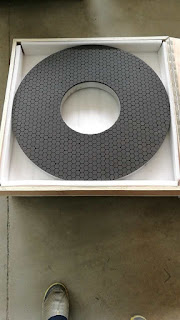Something you should know for CNC PCD Tipped Inserts
Edge Hone: The edge hone is by far the most commonly used edge preparation. Many inserts are automatically provided with an edge hone at the time of purchase, especially larger inserts that will be exposed to heavy cutting. An edge hone on a ground or precision insert must usually be specially requested. It is standard practice of all manufacturers to hone inserts that are to be coated before the inserts are subjected to the coating process. The reason for this is that during the coating process, the coating material tends to build up on sharp edges. Therefore, it is necessary to hone those edges to prevent build-up.
"L" Land: The "L" land edge preparation adds strength to the cutting edge of an insert. Essentially, the "L" land amplifies the advantages of negative rake by diverting a greater amount of cutting force into the body of the insert. An "L" land is normally used only on negative, flat top inserts placed at a negative rake angle. To use an "L" land on a positive or a positive/negative insert would defeat the purpose of positive cutting action.
Chamfer: A chamfer is a compromise between a heavy hone and an "L" land. A chamfer will also increase an insert's resistance to chipping and breaking. In a shop situation a chamfer is easier and quicker to apply than a heavy hone, because it can be applied with a grinder rather than a hand hone.
Combinations: Any time that a sharp edge can be eliminated the life of an insert will likely be extended. When an "L" land or chamfer is put on an insert, it will make a dramatic improvement in performance, but the "L" land or chamfer will leave some semi-sharp corners. To get the maximum benefit from an "L" land or chamfer, it will help to add a slight hone to each semi-sharp corner. This will be of significant value in extending tool life, particularly when a large "L" land is used.
Nose Radius: The nose radius of an insert has a great influence in the metalcutting process. The primary function of the nose radius is to provide strength to the tip of the tool. Most of the other functions and the size of the nose radius are just as important. The choice of nose radius will affect the results of the cutting operation; however, inserts are provided with various standard radii and, in most cases, one of these will meet each specific cutting need.
The larger the radius, the stronger the tool tip will be. However, a large radius causes more contact with the work surface and can cause chatter. The cutting forces will increase with a large radius for the same reason: increased contact with the work surface. When taking a shallow cut, a depth approximately equal to the radius or less, the radius acts as a positive lead angle, thinning the chip. A large radius will allow the cutting heat to dissipate more quickly into the insert body, reducing the temperature build-up at the cutting edge.
One of the most important influences of a large radius is that of surface finish. The larger the radius, the better the surface finish will be at an equal feedrate. A larger radius will allow a faster feedrate and yet obtain a satisfactory finish. During a finishing cut, the feedrate should not exceed the radius if a reasonable surface finish is required.
Any questions,please feel free to contact us via pcdmetaltools@gmail.com




Comments
Post a Comment